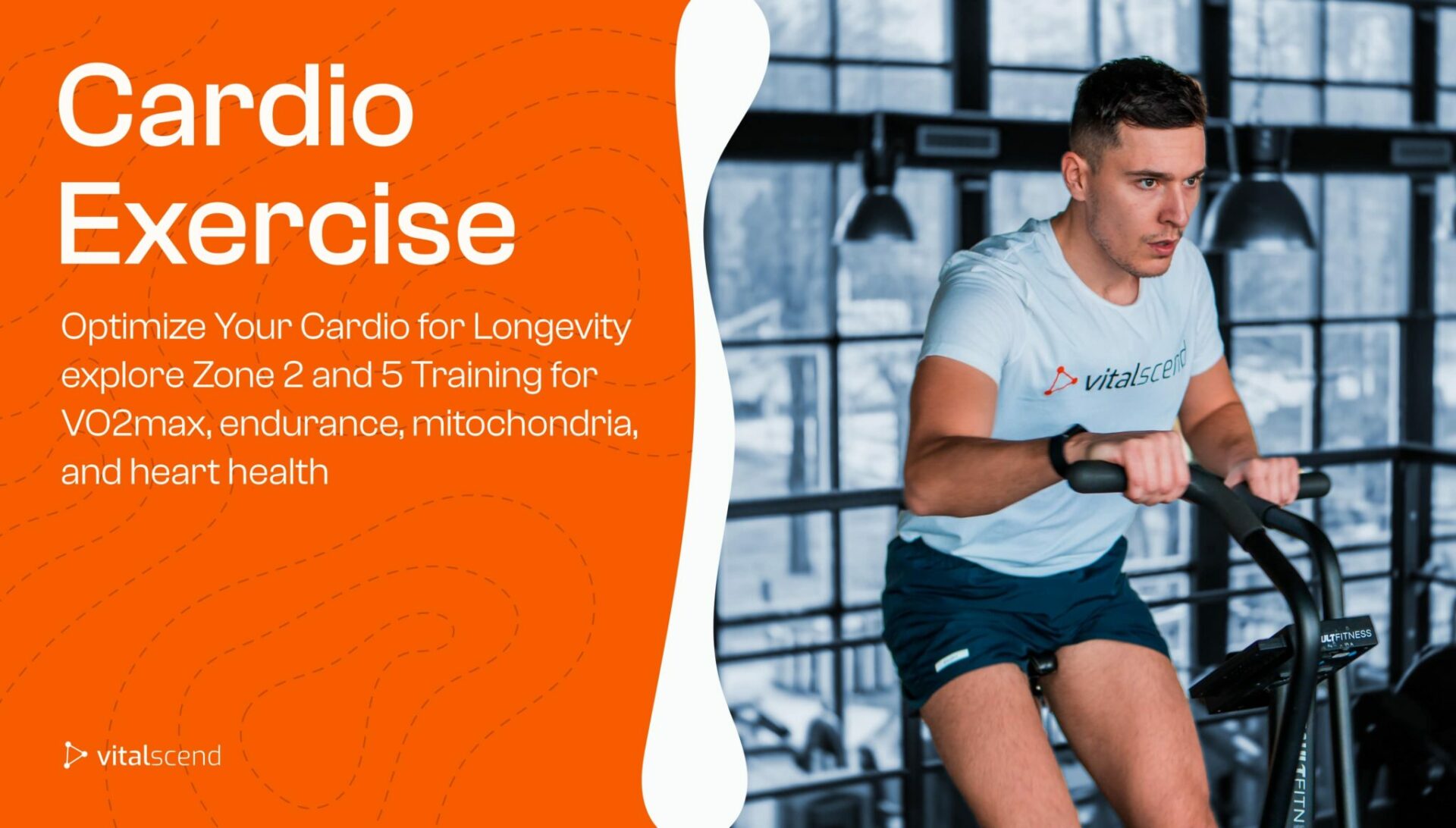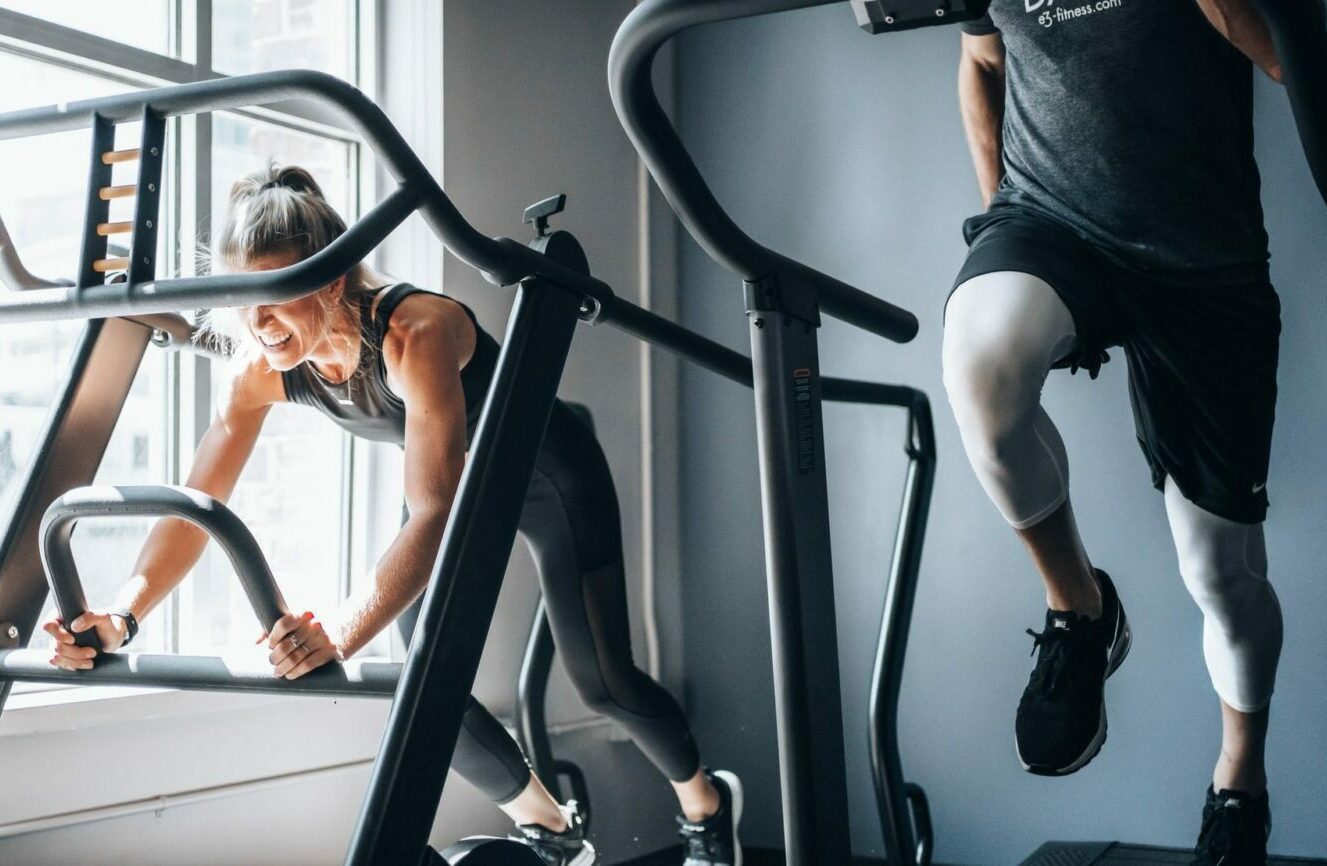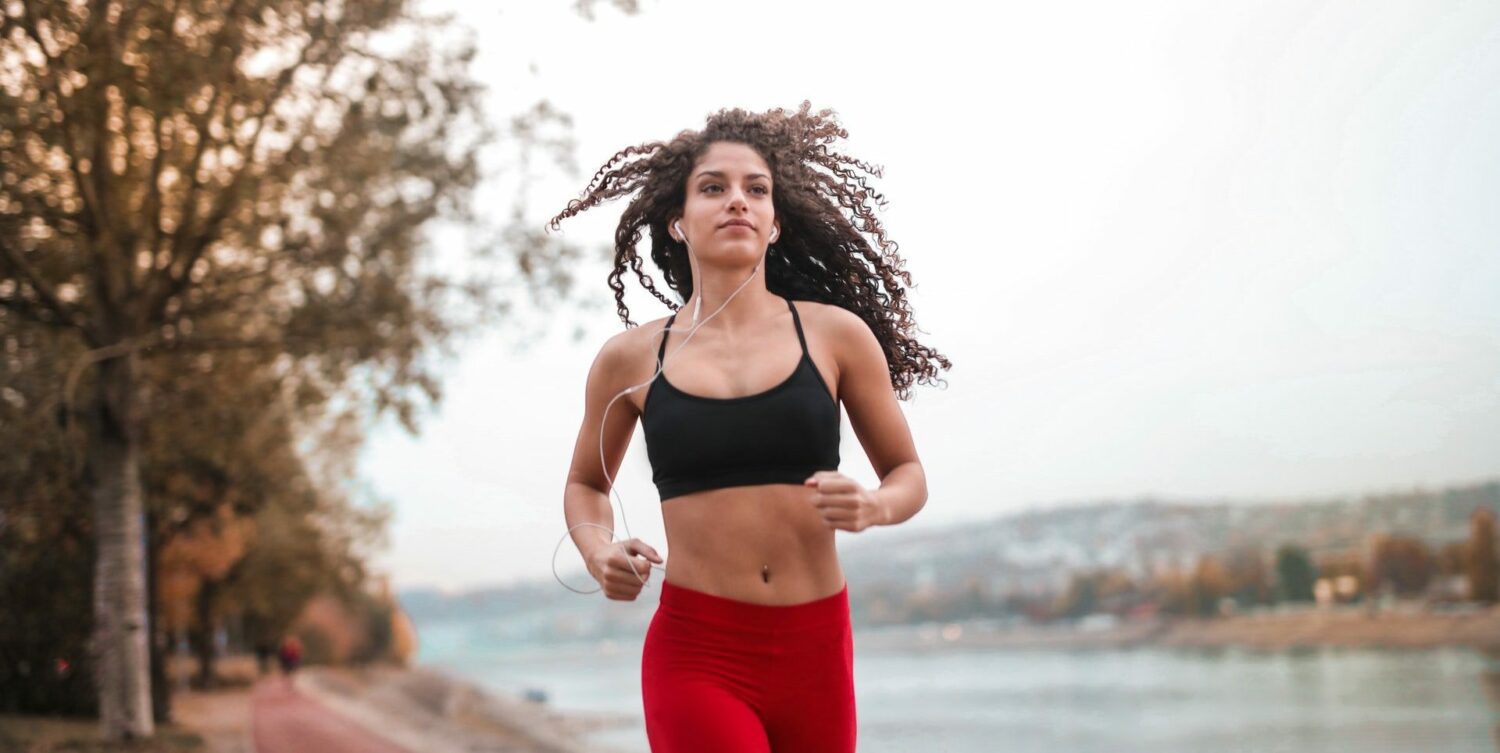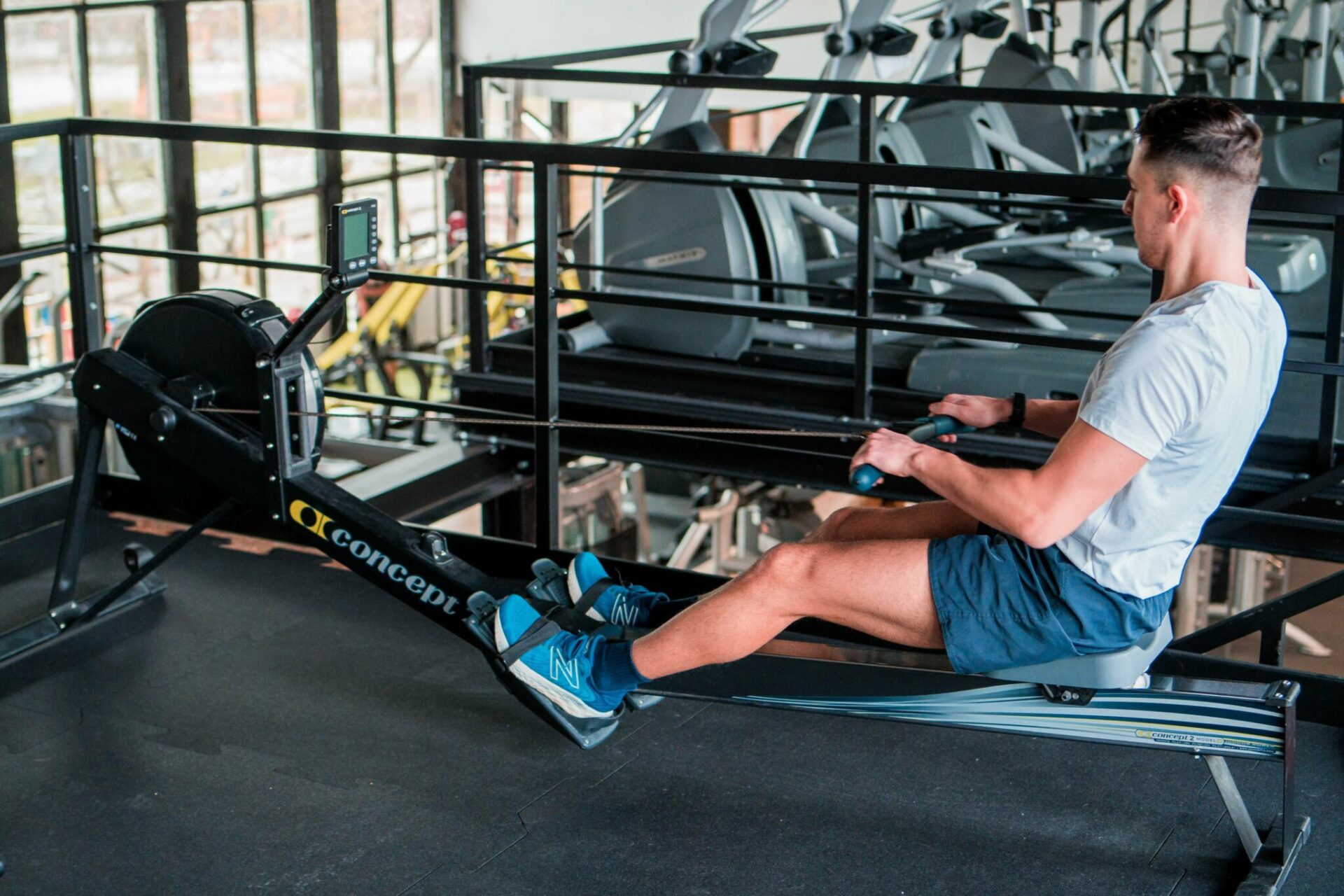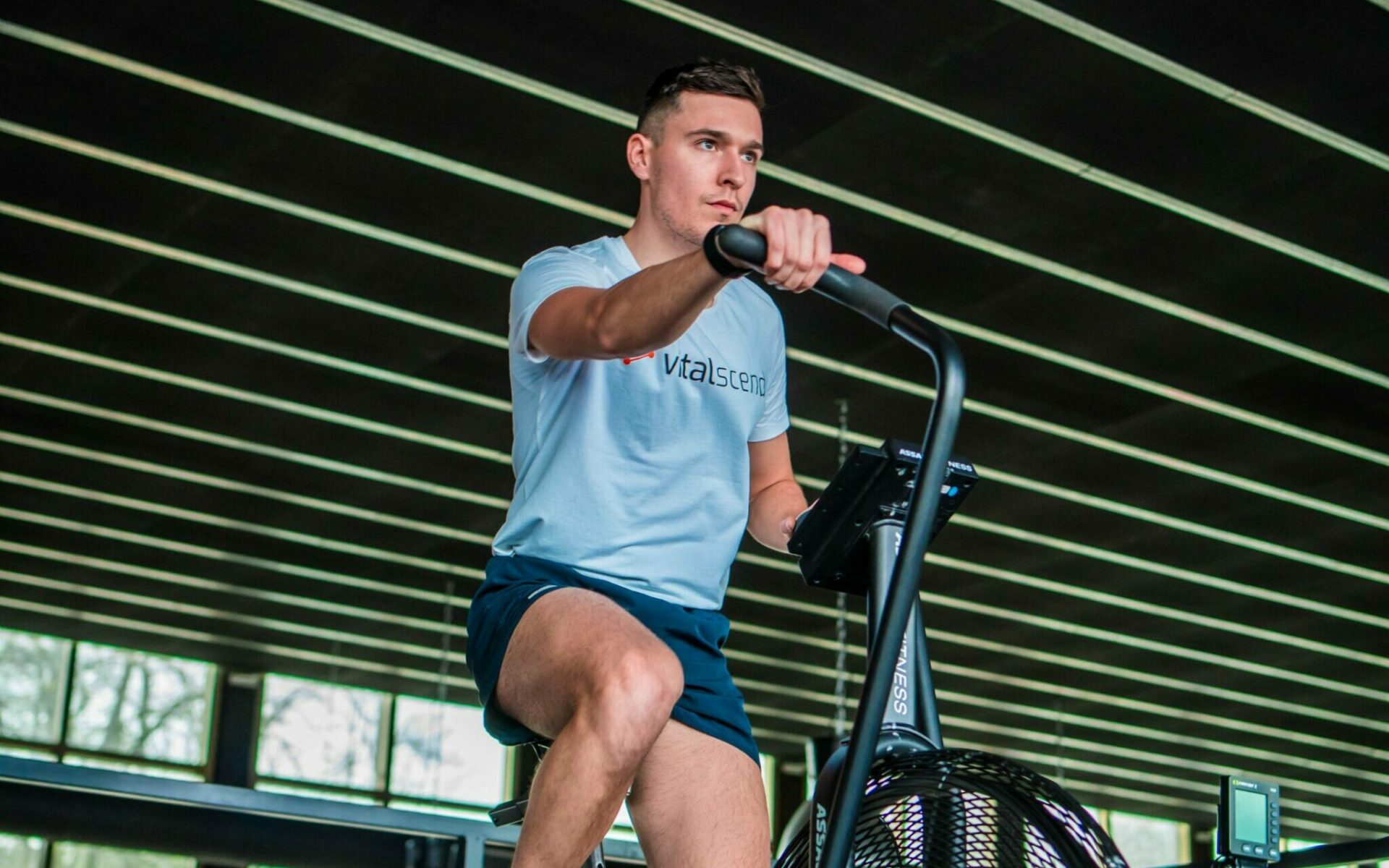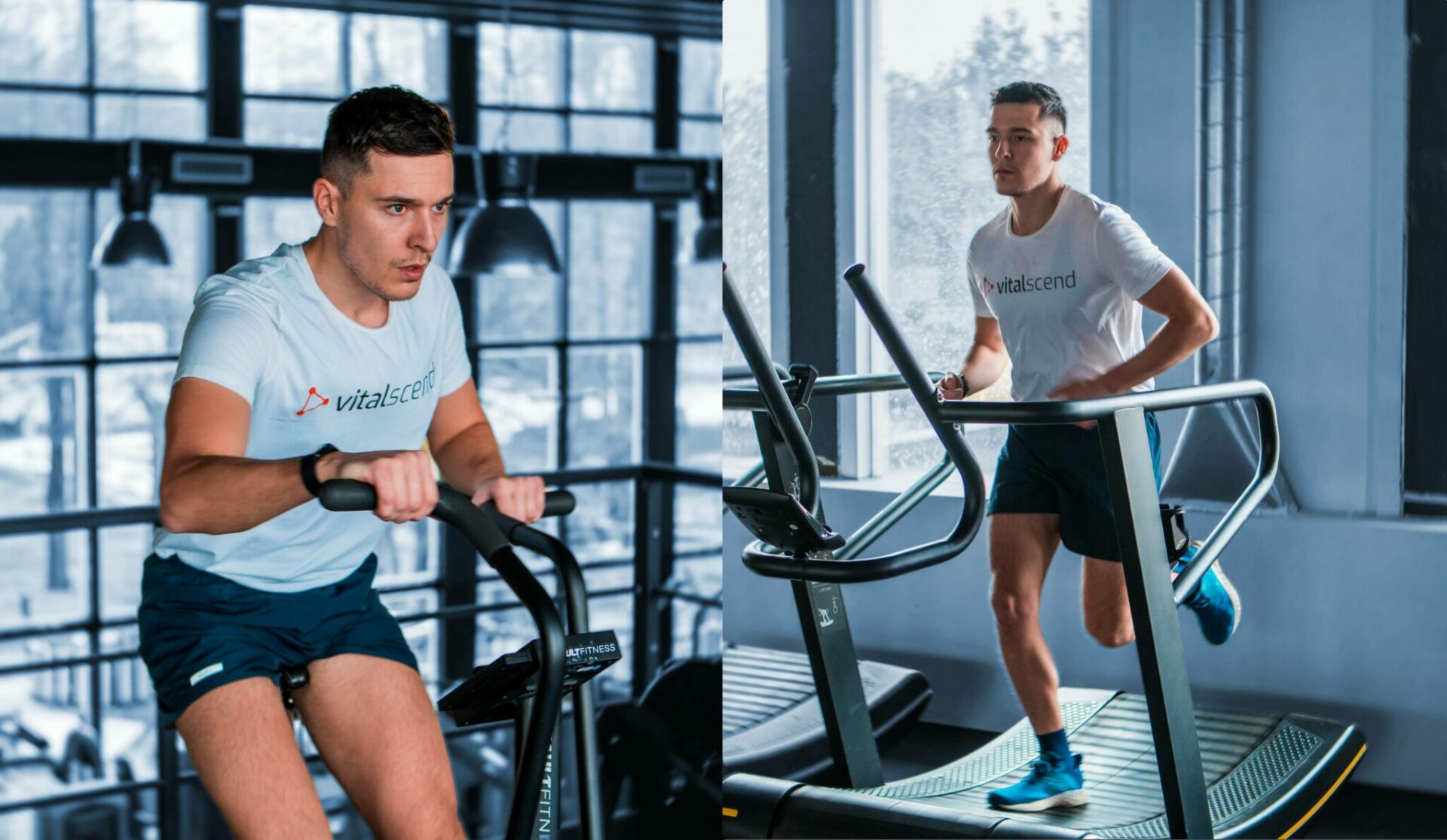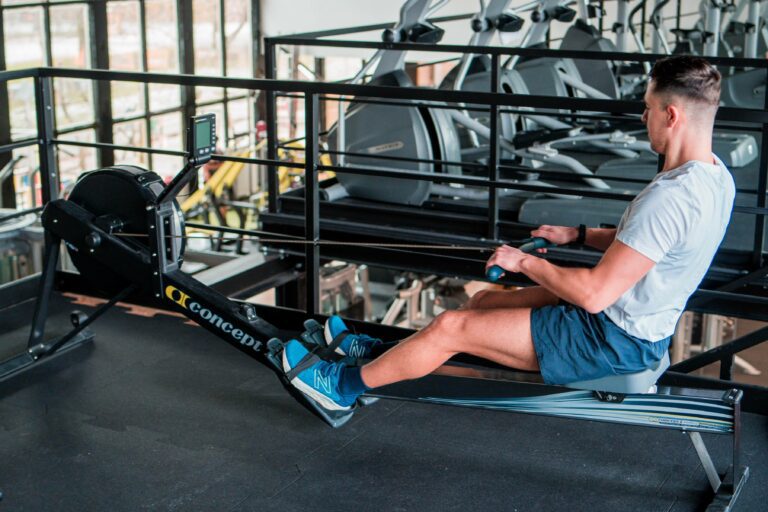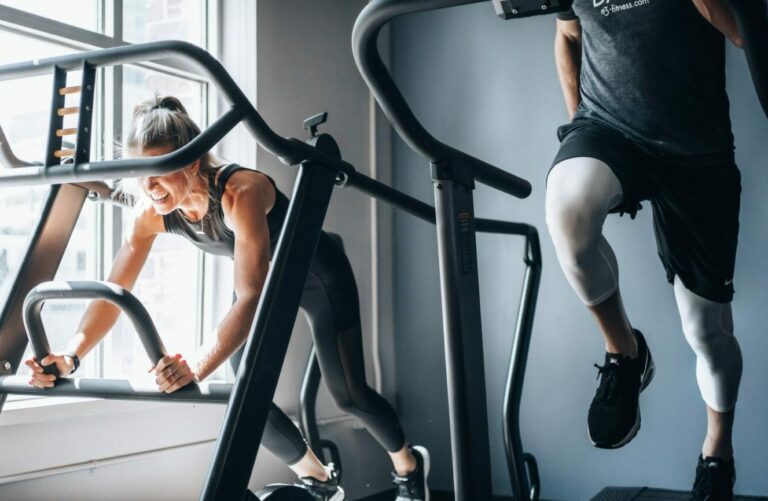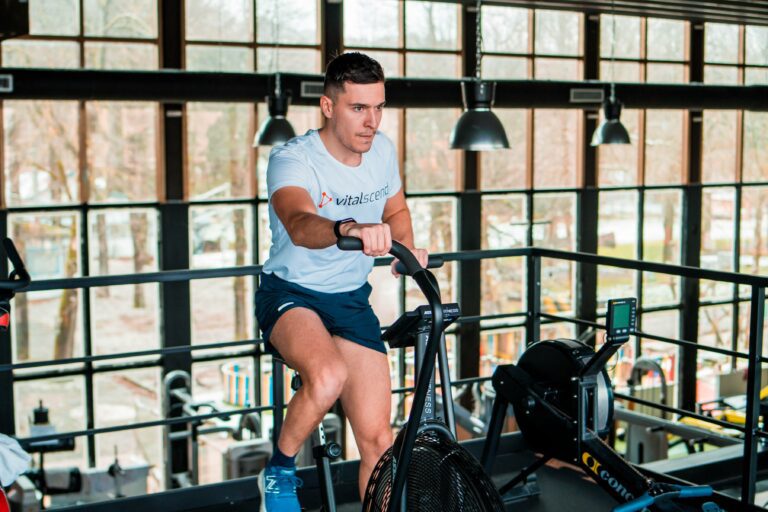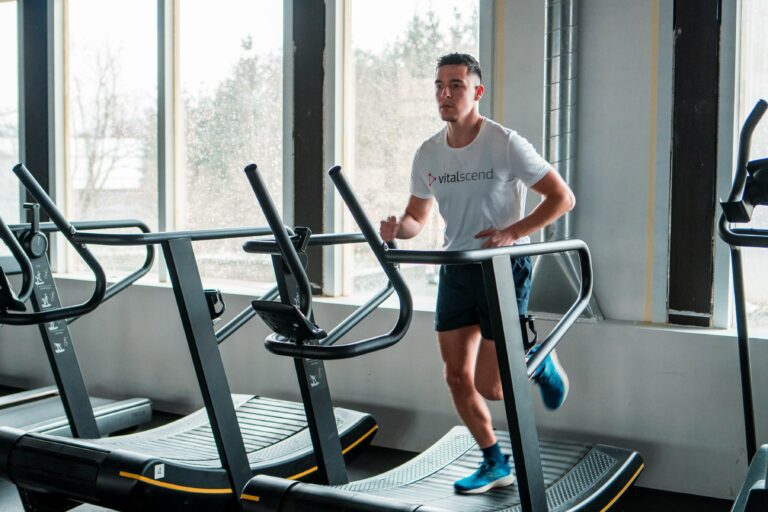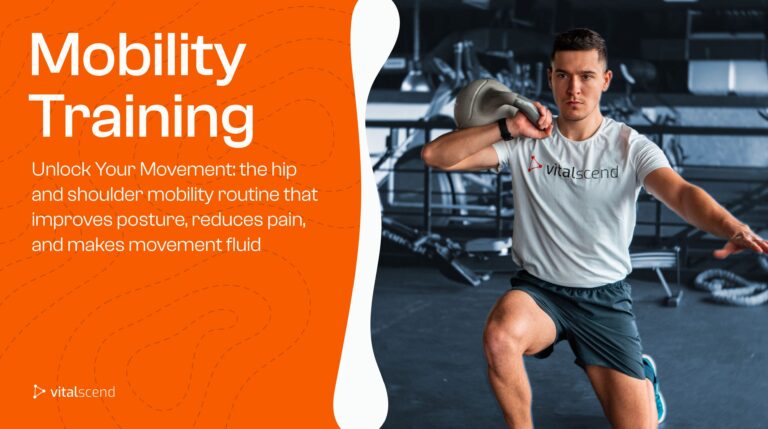Cardio 101: Aerobic Exercise for Longevity, Fitness, and VO2max
Cardio 101: What is Cardio
Cardio is a cyclic activity that raises both heart rate and breathing rate and improves cardiorespiratory fitness. So-called aerobic exercise, since cardio requires a lot of energy primarily created with the use of oxygen.
This repetitive motion not only strengthens your heart health but also aids in calorie burning and weight loss. As you engage in cardio exercise, you may start to sweat as your body tries to cool itself down.
Running, cycling, swimming, and dancing are typical examples of cardio workouts. You can increase your fitness level and lower your risk of developing cardiovascular disease by frequently partaking in these kinds of exercises.
It comes from the Latin word kardia which means heart, which makes sense as it’s a workout for the heart. Your heart beats faster during cardio to transfer more oxygen to your muscles.
Cardio 101: Everything You Need To Know
If you ever searched for an efficient weight-loss workout, you sure stumbled upon a cardio session….
7 Benefits of Cardio
Cardio offers numerous advantages that span from enhancing heart function to reducing body fat. Aerobic exercise trains the body to utilize oxygen more effectively. However, are there any other advantages beyond fat loss and heart health?
In addition to these two, cardio also offers various other benefits related to mood, stress, sleep, confidence, circulation, and other areas. It can impact multiple biomarkers of health and is associated with longevity and a better quality of life.
- Weight loss and Fat-loss: (1) cardio helps burn more calories, potentially resulting in a caloric deficit which is the only weight loss formula that works. LISS cardio increases fat burning while HIIT cardio has an additional after-burn effect, speeding our metabolism.
- Improves Heart Health: (2) it specifically targets heart function as the whole performance improvement stems from cardiovascular adaptations. These lead to better blood circulation, oxygen transfer, and a superior heart capacity.
- Blood Sugar Regulation: (3) cardio can help reduce blood sugar levels and cause metabolic adaptations which lead to improved insulin sensitivity. Plus, it transports extra glucose to the muscles, thus improving glucose control.
- Anti-Aging and Longevity: (4) consistent activity is linked to better mitochondria function, metabolic health, and hormone balance which lead to a longer lifespan and protect from (prolong) disease development.
- CVD Prevention: (5) by improving cholesterol profile, lowering LDL, and increasing HDL, cardio can prevent heart issues. Moderate activity levels are associated with lower cardiovascular disease risk or hypertension.
- Improves Mood: (6) (7) we’ve all heard of the runner’s high. It’s the splurge of good-feeling chemicals like dopamine, oxytocin, and serotonin we get after a great running session.
- Improves Aerobic Capacity: (8) (9) a very obvious one, cardio, especially at higher intensities can greatly improve aerobic capacity as it increases VO2max, an important predictor of cardiorespiratory fitness.
7 Physiological Benefits Of Cardio Exercise
If you’re thinking of jumping into your first cardio session and you want to make sure…
The 5-Levels to Cardio Intensity
There’s a huge difference between jogging at a slow tempo we can hold for 2 hrs vs. sprinting on a cycle ergometer at max. intensity for 10 seconds. Different systems are activated and different adaptations occur, hence why the benefits differ as well.
Determining cardio intensity is the first step toward proper training optimization. Great metrics to incorporate are the percentage of maximal heart rate (% HRmax) or maximal oxygen consumption (% VO2max).
Here’s a reference:
| Intensity | VO2max % | HRmax % | Use |
|---|---|---|---|
| Very Low Intensity / Light | 30-39 % | 45-55 % | warm-up, recovery, long-duration stamina |
| Low Intensity / Light | 40-59 % | 45-59 % | weight loss, fat loss, mitochondria |
| Moderate Intensity / Mid | 60-79 % | 70-90 % | aerobic fitness, endurance, mitochondria |
| High-Intensity / Vigorous | > 80 % | > 89 % | VO2max, lactate, aerobic-anaerobic |
| (Sub) Maximal | > 100 % | > 100 % | max. speed, anaerobic, glycolytic, VO2max |
Training intensity will greatly impact training duration. The higher the intensity, the lower we can maintain it. Lighter intensities are more aerobic, using oxygen and burning fat for energy. Best used for recovery, weight loss, mitochondria function, and aerobic fitness. Vigorous to maximal intensities work the anaerobic system, increase VO2max, and train for maximal speed or lactate threshold.
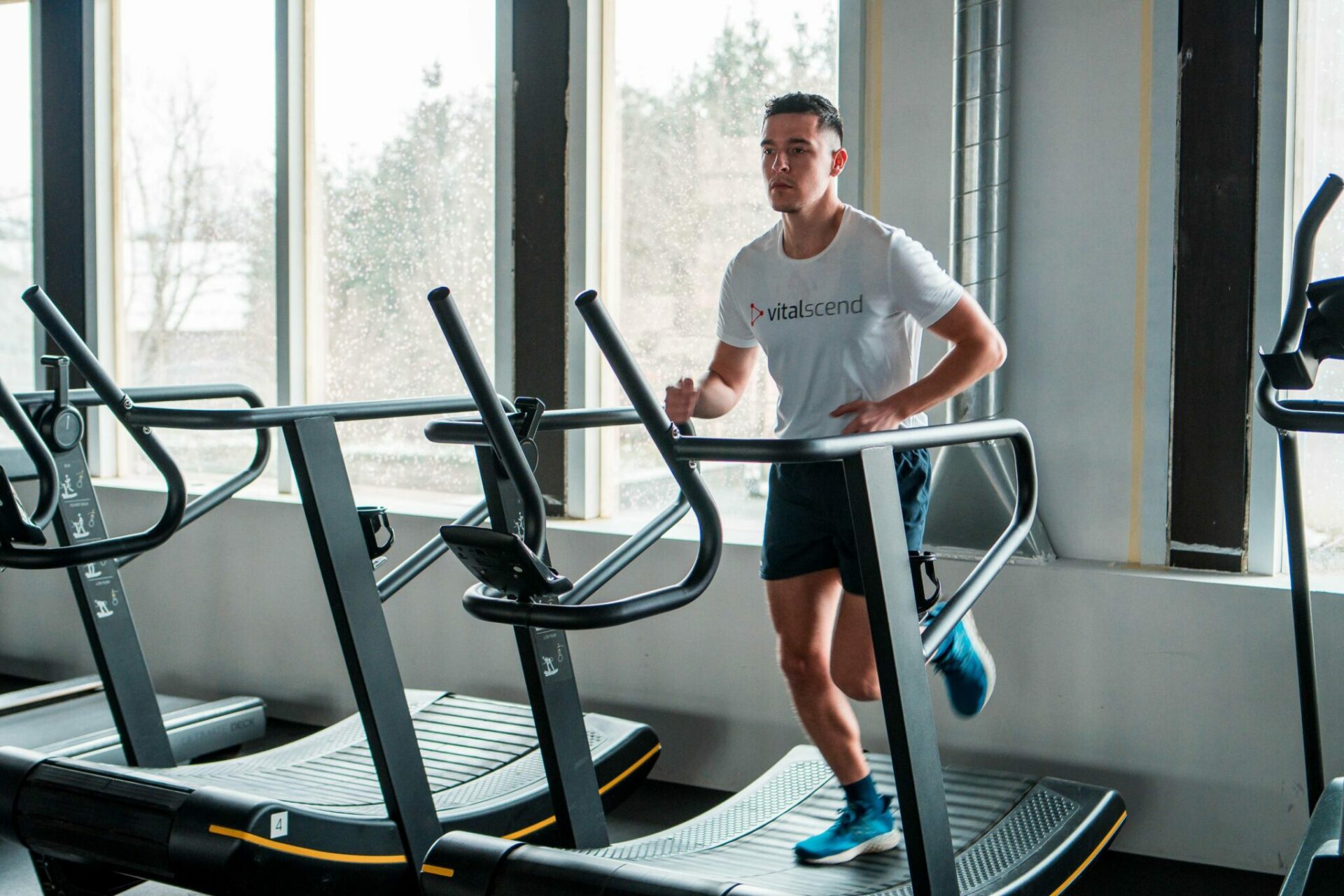
What type of cardio is the best for weight loss?
Low-intensity steady-state cardio helps burn fat as we move at the optimal intensity. Although HIIT can burn more calories per minute, it’s not sustained for as long. LISS cardio like slow running, swimming, or cycling can benefit weight loss and is the more sustainable way to go.
HIIT vs LISS cardio for endurance
There are many types of endurance. HIIT can improve speed endurance, which has to do with running at high intensities that can be sustained for up to 3 minutes. This is anything from a 100m sprint up to 2km, where the body trains on lactate threshold enhancing anaerobic glycolytic functions. LISS, creates the base for longer runs at a lower intensity. Think 5k or 10k, LISS will do it. It creates energy through burning fat, thus optimizing mitochondria function, which is the fundamental piece of endurance.
HIIT vs LISS for fat loss
While HIIT has been promoted for fat loss, it’s a losing battle. You can’t do 6 HIIT sessions a week, it is too stressful and raises cortisol. Instead, LISS is a better alternative as it burns fat and is more sustainable. The best option? 300 kcal caloric deficit combined with NEAT, or non-exercise activity thermogenesis. That’s when you literally move but don’t exercise. It’s the stairs you’re taking, the cycling to work, mowing the lawn, whatever, Do more of these.
HIIT vs. LISS | Which one is better?
HIIT is high-intensity interval training, which as the name suggests works at high intensity with (active) breaks in between. It is the so-called zone 5 training, with intensities we rarely need but are crucial to improving many factors related to performance and longevity. It includes activities like sprinting, jumping rope, intense rowing, or cycling at a maximal pace.
LISS, or low-intensity steady state training at a slower tempo, with cyclic activities like running, swimming, or cycling. It works the fundamentals of endurance and cardiometabolic health by optimizing mitochondria function – the way your body creates energy. (10) (11) It involves cyclic activities such as running, swimming, cycling, or hiking at a low-moderate pace.
High-intensity interval training (HIIT) is a shorter and more intense cardio that works the anaerobic glycolytic system, improving speed and stamina. It is effective in improving VO2max, (12) which boosts our cardiovascular and respiratory function.
HIIT is quite time-efficient for fat loss, as it produces an afterburn effect known as EPOC. It can have a significant impact on metabolic factors such as insulin sensitivity and cholesterol profile, (12) (13) which may aid in preventing metabolic deficits and diabetes-related issues. (14)
LISS cardio can be performed at a low to moderate intensity and offers more advantages focused on the cardiovascular system and longevity. LISS is more sustainable and highly adhered to. Since it lasts longer, the calorie burn net effect can exceed that of HIIT. Furthermore, LISS training can enhance endurance and stamina, particularly for longer distances.
HIIT vs Long Steady Cardio | Which One is Better?
If you are thinking about doing cardio, there are two options. Either a longer cyclic activity…
LISS Benefits
LISS is the low-intensity steady-state cardio that promotes numerous benefits for metabolic health and longevity. It builds the foundation for proper endurance and a healthy heart.
It supports daily activities which are crucial for proper functioning and overall mobility. When taking the stairs, cleaning, cooking, or biking to work, we do a form of LISS.
Here are some of the various benefits LISS promotes:
Heart Health
Energy
Fat-Loss
Cognition
Cardiovascular Health: running, walking, hiking are all great to stimulate the heart. It improves oxygen delivery, blood circulation, and reduces cholesterol. LISS is associated with lower blood pressure and a lower risk of heart disease
Metabolism and Energy: it takes care of energy creation at a cellular level. LISS stimulates fat burning, making us more metabolically flexible. It also boosts mitochondria function, as at low intensity we run mainly on oxygen.
Fat-Loss: the most effective strategy for sustainable weight loss ay be LISS. The net calorie loss can be greater than HIIT, and steady-state generally burn more fat for fuel.
Cognitive Boost: low-intensity exercise increases certain endocannabinoids and good-feeling chemicals like dopamine, serotonin, and oxytocin, reducing stress while improving mood and satisfaction.
7 Benefits of Low Intensity Cardio Exercise on Heart Health
There are numerous benefits of low intensity cardio that extend far beyond heart health. It’s the…
HIIT Benefits
HIIT is a more effective stimulant of the cardiorespiratory system, improving CRF. It targets the heart and the lungs in a more intense way, leading to adaptations such as increased VO2max and lung capacity.
The intervals in HIIT can be shorter (10 sec.) or longer (up to 3 min) but it’s at a vigorous to maximal intensity, so it elicits different adaptations. The main benefits of HIIT training include:
VO2max
Metabolism
Metabolic Health
Cholesterol
VO2max Increase: HIIT is great for enhancing maximal oxygen capacity, an important predictor of longevity, and a measure of cardiorespiratory fitness. The trick is, the intensity needs to be at the velocity of your VO2max or higher.
Metabolism Boost: training at high intensities can boost your metabolism, increasing the calories burned. While HIIT is very time-effective for burning calories, plus it has an EPOC or “afterburn effect”, it’s not that superior for fat loss compared to LISS.
Metabolic Health: where HIIT really shines is in improving metabolic factors. Yes, surprisingly training at high intensities can improve cholesterol profile, insulin sensitivity, and control blood sugar levels better than LISS in some cases.
Cholesterol Profile: HIIT can significantly improve cholesterol profile. It works its magic by reducing triglycerides, blood pressure, blood sugar and increasing HDL, the good cholesterol.
How to Increase VO2max
The 20 Minute HIIT Workout – How to Increase VO2max
VO2 Max is a standard measure of cardiorespiratory fitness. The higher it is, the more aerobically…
How to Increase VO2max
VO2max is an important indicator of health and has a strong association with longevity. It assesses the effectiveness of our respiratory and cardiovascular systems in using oxygen during exercise.
For each person, VO2max comes at a different speed (intensity). It’s the level at which you can’t effectively use the aerobic system and oxygen to sustain the energy demands placed on the body.
A higher VO2max value is linked to better cardiovascular and metabolic health, and increased energy production, which allows for greater physical activity.
To increase VO2max, a high-intensity interval training program is recommended, with a work-to-recovery ratio of 1:1. There are three common methods of achieving this: longer intervals, shorter intervals, or short sprints.
REHIT Training – The 9 Minute Cardio for VO2max, Fat-Loss, and Fitness
If you’re looking for the most effective way to boost VO2max, say hi to REHIT training….
Vo2max Training Protocol
One great 20-minute HIIT workout involves a 2-minute warm-up at 50% speed, followed by 4 cycles of 2 minutes at VO2max velocity (8/10 speed, 90%+ HRmax) and 2 minutes of active recovery at 40-50% of that speed; ending with a 2-minute cool-down period at 50% speed.
While HIIT is beneficial for increasing VO2max, steady-state or low-intensity cardio is still essential for improving endurance and promoting mitochondrial and cardiovascular health. It’s important to prioritize reaching 10,000 steps and incorporating steady-state cardio before focusing on optimizing VO2max.
What are the benefits of cardio?
Cardio provides numerous benefits for the body. The greatest is improve in heart health and lung capacity. it improves VO2max scores, and enhances circulation, cholesterol profile, and oxygen transport. Cardio increases endorphins which help boost mood, promoting a natural de-stress effect. It supports weight loss, improves metabolic health, and provides an internal detox.
How to increase VO2max?
VO2max is fastest increased through either short, medium, or long sprint intervals. Done at 1:1 ratio of work to rest, VO2max training involves cycling at 90-100% VO2max for 2-3 minutes, with equal active rests. Also, short bursts of maximal effort at 15 sec. with 3 min. active recovery is used, 4 sets in total.
What is the best exercise for longevity?
The best exercise for longevity in terms of cardio is to combine both zone 2 and zone 5 training. That is low intensity or Z2 done at 60-75% HRmax which improves mitochondria function, burns fat, improves metabolic health, and supports aerobic function. Then high intensity or Z5 is training done at 90-100% HRmax to increase VO2max, heart function, anaerobic capacity, and reset insulin sensitivity.
Longevity: Zone 2 and 5 Training
Humans need aerobic training for the various benefits it promotes, and the functions it supports. The question is, where does the strongest benefit lie for health and longevity, not performance? How much cardio should we do?
The WHO guidelines for physical activity for adults aim at 150-300 min. weekly exercise at low to moderate intensity or 75-150 min. at moderate to vigorous intensity. (15)
By combining Zone 2 and Zone 5 training, both aerobic and anaerobic systems are targeted, resulting in improved performance, health, and longevity. This combination of training prepares the metabolism for long-term demands and enhances short-term aerobic power.
Zone 2 and 5 Aerobic Training for Longevity, Fitness & Health
What is the optimal aerobic training for longevity, fitness, and health? While individualization is of the…
What is optimal depends on numerous factors, but some rough estimates in terms of cardio training are:
- 1-2 LISS sessions weekly, at a low-to-moderate tempo of 60-75% HRmax for 45-90 minutes
- 1-2 HIIT sessions weekly, using short (15 sec.) or long (3 min) intervals at 90% + HRmax with 1:1 work-to-rest ratio; active rest is at 40% HRmax; total cycles 4-12.
Zone 2 training refers to low-intensity, steady-state (LISS) aerobic exercise performed at 60-75% HRmax. It can be done through activities such as cycling, running, swimming, or hiking. This type of training is important for weight loss as it helps the body burn fat for fuel. It also enhances mitochondrial function, energy production, and metabolic health.
On the other hand, Zone 5 training is a high-intensity, anaerobic exercise performed at 95%+ VO2max. This type of training includes activities like track sprints, maximal cycling, or intense rowing. Zone 5 training is beneficial for improving aerobic power and heart capacity, and it’s the most effective way to increase VO2max values. It also leads to improved insulin sensitivity and cholesterol profile.
Bullet Points
- Cardio is a cyclic activity done at a certain tempo that stimulates the cardiorespiratory system, increasing heart rate and breathing rate.
- The benefits of cardio are numerous, mainly targeting the cardiovascular system by improving cholesterol, blood circulation, and heart capacity, thus reducing heart disease risk.
- LISS is a low-intensity, steady-state type of cardio done at a tempo of around 65-70% HRmax, so-called zone 2 training. It incorporates exercises like hiking, running, fast walking, swimming, or cycling.
- HIIT is high-interval intensity training that uses intervals of intense activity (>80% HRmax) and active rest. It incorporates exercises like jumping rope, sprinting, pushing a sled, or intense rowing.
- LISS is more beneficial for improving heart health, mitochondria function, burning fat, and weight loss.
HIIT is more beneficial for increasing VO2max, improving heart and lung capacity, and enhancing athletic performance.
- Zone 2 and 5 training is the optimal combination for longevity, vitality, and health. It prepares the body both for slow and long activities (walking, cycling) and short anaerobic bursts (sprinting up the stairs).

